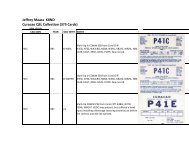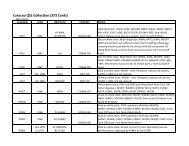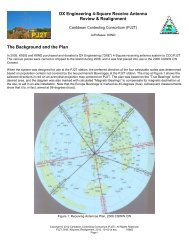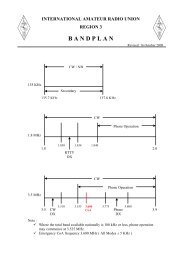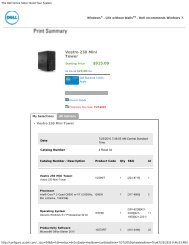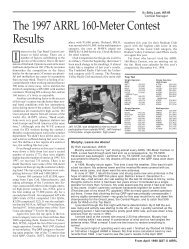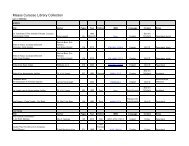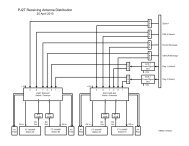Create successful ePaper yourself
Turn your PDF publications into a flip-book with our unique Google optimized e-Paper software.
<strong>.40</strong> S&W <strong>IPSC</strong> Loads List<br />
Compiled By: Jeff Maass, USPSA L-1192<br />
Updated: 24 October 2003<br />
Double Charges<br />
Most of the loads listed below, especially using the heavier bullets, use powder charges which barely fill 1/3 of the <strong>.40</strong>S&W case. This means that you can<br />
easily double (or even triple!) charge the <strong>.40</strong>S&W case with powder. If you don’t have a powder-check device on your press (or even if you do!) I<br />
re<strong>com</strong>mend that you position a lamp so that the light shines down into the case at the bullet-seating stage of your press. Look down inside the case and<br />
verify that the powder charge looks correct before placing the bullet on top of each and every round! This seems excessive, but seems a sensible<br />
precaution with this caliber.<br />
Primers<br />
Although Small Pistol Primers generally work fine in <strong>.40</strong>S&W, several contributors suggested that using Small Rifle Primers, as is typically done for other<br />
high-pressure <strong>IPSC</strong> loads (38 Super, 9x21, 9x23, etc.) offers some additional margin of safety. Also, if you shoot one of these other calibers in Open<br />
Category, you can stock just one type of primer, and have less risk of loading a Small Pistol Primer in your 38 Super loads. Remember to work up the load<br />
with these primers, just as with any other <strong>com</strong>ponent you change!<br />
Barrel Lengths<br />
Most ‘service’ guns have short barrels (4” seems typical), and most of the published data is provided for those guns. These loads require more powder to get<br />
the bullet to <strong>IPSC</strong> Major velocities than would be required in the 5” barrel more <strong>com</strong>mon among <strong>IPSC</strong> shooters. If you are developing a load for a 5”<br />
barrel, and are referring to data below for a shorter barrel, start your powder load down a bit more than the usually-re<strong>com</strong>mended 10%: perhaps<br />
15% down.<br />
Cartridge Overall Length (OAL)<br />
Many of the <strong>.40</strong>S&W handguns in use were developed from 9x19 handgun ‘roots’, and the SAAMI maximum Cartridge Overall Length ( 1.135”) for the<br />
<strong>.40</strong>S&W was set to ac<strong>com</strong>modate the limitations of the magazines available for those designs. With the use of the <strong>.40</strong>S&W in 1911-pattern guns, the<br />
magazines will ac<strong>com</strong>modate much longer OALs, and in many cases these longer cartridges will feed better in those guns. Many of the loads listed below<br />
were for OALs greater than 1.135”, and those without specified OALs from reloading manuals are to be assumed to be for loads no longer than 1.135”.<br />
Reducing the OAL of a load which is already at or above maximum pressure will drastically increase the pressure, possibly resulting in<br />
spontaneous catastrophic disassembly of the cartridge and gun!<br />
If you are developing a load with an OAL shorter than the specific data seen below, you should start your powder load down a bit more than the<br />
re<strong>com</strong>mended 10%: perhaps 15%-20% down.<br />
2



